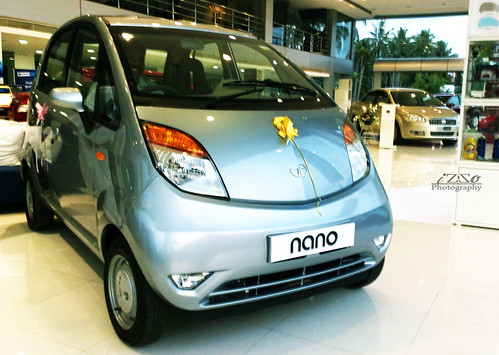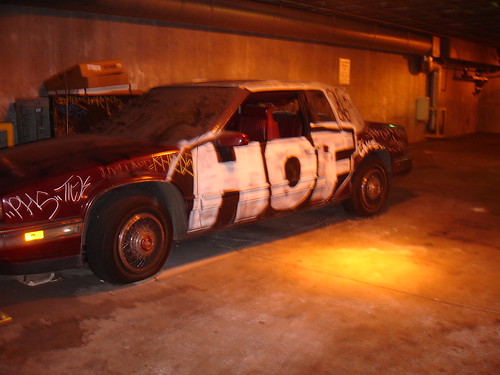Toxic battle brewing over a new breed of automobile refrigerant HFO-1234yf; Greenpeace Germany sounds alarm; German Environment Minister calls it “highly risky economic and technical adventure”
(Source: R744.com &1234facts.com)
The manufacturers are touting that HFO-1234yf meets the automotive industry’s needs for a cost-effective, commercially viable low global warming potential (GWP) replacement for R-134a refrigerant.
Some of the stated benefits of HFO-1234yf include:
- lower lifetime greenhouse gas emissions
- dramatically shorter atmospheric lifetime
- compatibility with current automotive a/c systems
- superior cooling efficiency
- best ease of adoption
- safety for mobile applications
In the early 1900’s, CFCs provided the first form of refrigeration. As their ozone-depleting potential became recognized, the Montreal Protocol was adopted by many nations to begin the phase out of both CFCs and HCFCs. HFCs were developed to fill the void and while they were non-ozone depleting, they did have global warming potential.
Greenpeace refers to a peer-reviewed SAE Paper presented by Roberto Monforte, Fiat, at the SAE World Congress in Detroit on 21 April. The paper, obtained by R744.com, states that if 0.55 kg of HFO-1234yf are completely released in an accident and exposed to a flame inside the passenger compartment of a Pontiac Grand Prix model the concentration of highly toxic hydrogen fluoride will not surpass 150 ppm (parts per million). HFO-1234yf would therefore not pose a higher risk to the passenger than the currently used refrigerant R134a.
A calculation strongly rejected by Greenpeace and external industry sources, who suggest that this figure might be understating the actual formation of HF by up to 1000 times. If 0.55 kg of 1234yf are burned, 0.39 kg of HF will develop. Calculated on a cabin volume of 3m3 (weight of air 3.6 kg), a concentration of 100,000 ppm would occur, or 10.7%. As opposed to 150 ppm, this 1000 times higher concentration would be enough to kill busloads of humans. Even with varying vehicle types, the HF rate inside the compartment could be hundreds of times higher than that assumed in the SAE paper. Click here to read more about the Greenpeace argument.
In the middle of this fiasco, Environment Minister Sigmar Gabriel has raised his voice to warn the German automotive industry against a “highly risky economic and technical adventure” with an untested, flammable, and toxic refrigerant 1234yf. Moreover, manufacturers should not expect the EU R134a phase-out schedule to change, but rather choose CO2 now as the most energy-efficient and safe alternative available.
 In an interview with ACE, a leading automotive club representing the interests of 550.000 Germans, the Environment Minister Sigmar Gabriel has taken a clear stance in favour of CO2 in the currently hotly debated question of which refrigerant to choose for future car air conditioning systems:
In an interview with ACE, a leading automotive club representing the interests of 550.000 Germans, the Environment Minister Sigmar Gabriel has taken a clear stance in favour of CO2 in the currently hotly debated question of which refrigerant to choose for future car air conditioning systems:
“Fact is: With CO2 there is an environmentally friendly alternative to R134a available, and it has been proven in real life,” Gabriel stated. “The VDA has to know what it does to strengthen its credibility or not,” he referred to the clear commitment to CO2 already issued in 2007 by all carmakers united in Germany’s automotive association VDA. The Environment Ministry would continue to support CO2 (R744) as not only the most ecological option, but also that with a significantly higher energy efficiency, as measurements by the Federal Environment Agency have proved.
Untested chemical “high adventure”
Gabriel also issued a clear warning to the automotive industry to not use untested alternative refrigerants. The currently discussed flammable and toxic chemical 1234yf would be a completely new substance not yet fully investigated by public authorities for its ecological and health risks. As a consequence, manufacturers deciding for 1234yf would embark on a “high economic and technical adventure”, Gabriel concluded.
The Minister warned the German automotive industry against a further use of R134a in cars after 2011. According to Gabriel, the EU MAC Directive, prescribing the use of refrigerants with a Global Warming Potential of below 150 in future passenger cars, will not be changed. Carmakers should acknowledge that he would hold on to the agreed phase-out schedule starting in 2011, with a gradual ban of R134a until 2017. As a result, from 2011, the deprivation of type approval for cars using the climate-damaging refrigerant would be enforced as originally scheduled.











